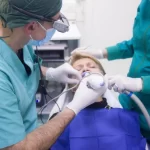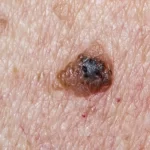Dental medicine, also referred to as dental science and dentistry, is a division of medicine that focuses on the diagnosis, treatment, prevention, and prevention of dental diseases, conditions, and disorders of the maxillofacial region. Dentists are also known as oral medical specialists. Oral medicine includes dentistry, periodontal diseases, periodontitis, oral surgery, oral radiology, and other related disciplines. Oral surgeons, dental hygienists, dental therapists, dentists, and similar professionals provide care to patients in all of these areas. The field of oral medicine has tremendous job opportunities for those trained in all aspects of it.
Dental diseases can affect people of all ages from infants to adults. The most common type of dental problem seen by dentists is tooth decay, which occurs when bacteria gnaw on the outer layer of your teeth, causing the surface to decay and crumble away. Tooth decay leads to cavities, which become infected, and may require filling or removal. Other oral problems include bleeding gums, abscesses, swollen and painful gums, jaw pains, toothaches, tooth loss, gum disease, bad breath, and other types of dental and oral discomforts. These different types of dental problems can be treated with the help of different types of treatments.
There are a variety of dental implant procedures available today. One of these procedures is called a bridge, and it’s a permanent fixture that allows dentists to attach replacement teeth to the remaining teeth in the mouth so that they can replace them with newer and stronger ones. Another procedure is known as a crown, which is similar to a bridge except that it’s permanently installed. The third type of procedure is known as a dental veneer, which is a thin porcelain laminate that is placed over a tooth so that a more attractive tooth-like structure is created. If your teeth are damaged, missing, chipped, broken, or cracked, your dentist might suggest dental implants.
Dental implants are made from a titanium screw that fits tightly over your natural teeth. This screw is shaped in such a way that it will remain in place when you bite down, protecting your implant from becoming misplaced or deformed during eating and chewing. You can have more than one of these implants, allowing your dentist to provide you with a better smile and better dental health. Typically, you’ll need two crowns for those with healthy gums, one for those with damaged gums, and a fourth for those who have lost their natural teeth.
Dental bridges are structures or false teeth that are used along with dental bridges. They’re used to fix gaps between teeth and overhangs. Dental bridges are constructed by fitting temporary crowns over existing teeth. They can also be used to repair jaw abnormalities, such as crooked teeth.
If your teeth are too worn to be repaired with natural dental prosthetics, you can get your teeth repaired with surgical prosthetics. These prosthetics, which are made from either synthetic or natural materials, help replace one or more missing teeth. This allows you to regain your smile, and your ability to eat and speak without fear of developing further problems due to your missing teeth.







 Understanding Skin Types – Normal, Dry, Oily, Combination
Understanding Skin Types – Normal, Dry, Oily, Combination  The Ultimate Skincare Routine for Every Skin Type
The Ultimate Skincare Routine for Every Skin Type  The Essential Guide to Digestive Enzymes Australia: Boost Your Gut Health
The Essential Guide to Digestive Enzymes Australia: Boost Your Gut Health  Latest Breakthroughs in Acne Treatment
Latest Breakthroughs in Acne Treatment  The Rise of Virtual Fitness Classes
The Rise of Virtual Fitness Classes  Fun and Creative Ways to Stay Active Indoors
Fun and Creative Ways to Stay Active Indoors  Linking Oral Health to Overall Wellbeing
Linking Oral Health to Overall Wellbeing  Can You Exercise While Pregnant?
Can You Exercise While Pregnant?  Is Skin Cancer Curable?
Is Skin Cancer Curable? 